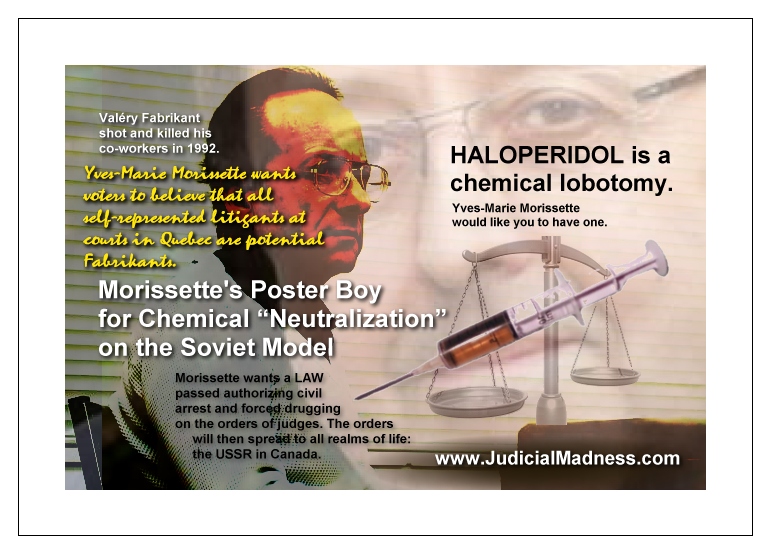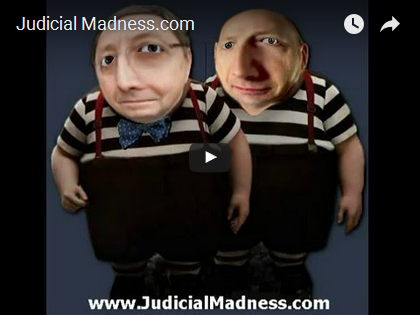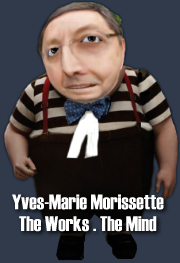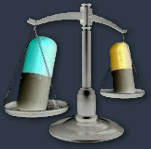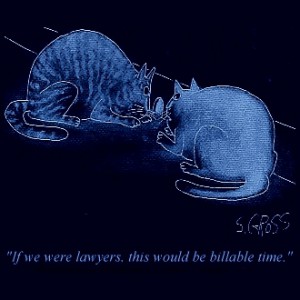“Quérulence” Timeline
This timeline needs the Fabrikant case in which Rolland declared him.
| 1984 | Yves-Marie Morissette first broaches alleged abuse of process as a symptom of mental illness
No doubt in honor of George Orwell, Rhodes Scholar Yves-Marie Morisette pens his first article raising the subject of “querulousness” or “quarrelsomeness” for the Quebec Bar Review. The French publication may be cited as “L’initiative judiciaire vouée a l’échec et la responsabilité de l’avocat ou de son mandant“, (1984) 44 R du B. 397. Translation: “The legal initiative doomed to failure and the responsibility of the lawyer or of his mandatary“. |
| 1994 | xxxxxx |
| 1996 | Quebec’s first published judicial declaration ordering detention and conditions (listing) of two litigants
Quebec Superior Court judge Maurice Lagacé declares both Edward Yorke and Margola Shuchat “persistent and vexatious litigants” and orders them “to refrain from instituting any further proceedings in Superior Court or from continuing those previously instituted by them in Superior Court, except by leave of the Chief Justice of the Superior Court of the Province of Quebec or the Judge appointed by him”. Lagacé further orders “the clerk of the Superior Court and other officers of the Superior Court to take measures to refuse issuing, filing, or placing on the roll, any legal proceedings presented by the Plaintiffs, except by prior leave of the Chief Justice of Superior Court or the Judge appointed by him.” Judge Lagacé justifies his measures at paragraph 37: “Where the law is silent, the inherent jurisdiction of the Court may be exercised, in any given case, by summary process. This jurisdiction include [sic], ‘in the case of an abuse of process, (the power for the Court) to stay or dismiss the action or impose terms as it thinks fit’2. Judge Lagacé has obviously squeezed his judicial declaration of “persistent and vexatious” litigants and an order for these two persons to seek prior judicial approval of all future (hypothetical) litigation, into the words “impose terms as it thinks fit”. In doing so, Lagacé obviously relies on the opening words of the cite, “Where the law is silent”. However, the law was apparently not silent on the problem of frivolous or abusive litigation in 1996. The Code of Civil Procedure in 1996 very specifically authorizes judges to deal with existing litigation before them as follows: xxx xxx xxx xxx. However, Judge Lagacé has likely presumed, or anyway hoped that the words “where the law is silent” in fact authorize judges to legislate new provisions to do something they would like to do, but which substantive law does not authorize. My assumption here tends to be supported by the words of Yves-Marie Morissette in “Pathologie et thérapeutique du plaideur trop belliqueux“, (2002) 33 R.D.U.S. 251 (translation: “Pathology and Therapeutic of the Warlike Litigant”):
When are the courts ever “right” to usurp legislative powers? In Canada, we have a federal-provincial division of powers. The federal level may not usurp provincial powers; the provincial level may not usurp the federal powers. And yet, Judge Lagace in my view is usurping federal powers which relate to the legislative subject matter of harassment and are dealt with in the federal Criminal Code of Canada (article 264, etc. xxxx). In fact, the usurpation of powers belonging to another body created by the constitution would be a coup d’etat, a repudiation of the constitution, a casting off of the limitations imposed by the constitution. If a provincial legislature were to cast off these limitations the end result would be a unilateral declaration of independence or UDI. In this case, Quebec judges have cast off the limitations of the constitution, and we apparently are faced here with a judicial UDI. History is replete with cases of a nation’s military taking over a country and even imposing a new constitution. Here, I think we have the amazing case of Quebec courts taking over the provincial boundaries by hijacking federal legislative subject matter with the result that they have expelled the prevailing constitution from the territory and given themselves a new one by which they, themselves, claim supremacy. The terms of the Quebec Civil Code and Code of Civil Procedure, inter alia, are thus qualified by the judicially imposed UDI. In a related article, “Quelques réflexions sur la quérulence et l’exercice abusif du droit d’ester en justice“, published by the Barreau du Québec in their conference proceedings under the title Congrès Annuel du Barreau du Québec (2002), ISSN 1185-7110, Morissette says:
By “spectacular character”, Morissette must mean that these declarations and ordinances are not really in virtue of the courts’ inherent powers. (This would be more apparent if you read a good article on the subject, and I recommend Joan Donnelly’s “Inherent Jurisdiction and Inherent Powers of Irish Courts”, Judicial Studies Institute Journal, 2009:2, 122. http://www.judicialmadness.dev/inherent-jurisdiction-and-inherent-powers-of-irish-courts/) But, because the judges wear the robes while doing them, they are essentially getting away with purporting to alter the fundamental rights of citizens as litigants, rights recognized to them by the Quebec Civil Code at article(s) xxx xxxx xxx: xxx xx xxxx I would suggest that the Quebec Civil Code having spoken expressly on the point of exercising rights in good faith, and so as not to harm others, and the Code of Civil Procedure having provided the courts with express “terms” under which these courts may control abusive procedures (i.e., by dismissing them), the courts may not “enhance” their options by usurping substantive legislative powers in order to seize individuals, list them, subject them to prior authorization, or again, later, as has developed in Quebec, declare them “crazy”, i.e., impliedly declare them to be paranoid schizophrenics and thus candidates for “neutralization” by forced drugging with brain-damaging neuroleptics (Yves-Marie Morissette’s word). |
| xxxxxx | xxxxxx |
| 2000 | Yves-Marie Morissette is cited re “quérulence” (French) by André Giroux in “La magistrature a un rôle à jouer pour éviter les dérapages” (translation: “The magistrature has a role to play to avert hijackings of judicial process”), Volume 32 – number 14, 1 September 2000, Journal du Barreau, Barreau du Québec |
| 2001 | Yves-Marie Morissette publishes “Pathologie et thérapeutique du plaideur trop belliqueux” in volume 155 of the Quebec Bar Association’s conference proceedings entitled “Développements récents en déontologie, droit professionnel et disciplinaire“. My translation: Recent Developments in Ethics, Professional Law and Discipline. The journal is published for the Quebec Bar Association’s permanent training service by Les Editions Yvon Blais Inc, ISBN 2-89451-497-2. |
| 2002 | ////// Morisette’s “Pathologie” is republished by Université de Sherbrooke xxxx. (translation: “Pathology and Therapeutic of the Warlike Litigant”. ////////// |
| 2002 | Morissette publishes a conference article for the 2002 Quebec Bar Association’s annual gabfest: Quelques réflexions …. (translation: “Some reflections on quarrelsomeness and the abusive exercise of the right to institute legal proceedings. |
| 2002 | Quebec lawyer Claude Duchesnay writes “Se Représenter Seul” for Volume 34, Number 13 of the Quebec Bar Review, which is published on August 1st, 2012. Duchesnay’s article discusses Yves-Marie Morissette’s purported mental illness of “quarrelsomeness” and features a photograph of then-lawyer Morissette, in trio with another lawyer, Marie Gaudreau and convenient psychiatrist Dr. Gilbert Pinard. (Translation: “Without A Lawyer”.) |
| 2002 | Yves-Marie Morissette is interviewed by Myriam Jézéquel, a researcher who writes for the Quebec Bar Review. The interview is published under the title, “Ontologie de la quérulence” in Volume 34, Number 8 of the Quebec Bar Review on May 1st, 2002. In this interview, Morissette refers to the then-current “remedy” of “prohibition of litigation”. And keep in mind, this is not yet a “practise rule”, but falls under the category Morissette himself describes as the judiciary “preceding” the legislature, attaching the adjective “spectactular” to describe the character of these apparently spontaneous judicial declarations of prohibition pronounced against litigants. At this time, the Quebec Code of Procedure is being revised; therefore, when Morissette explains to Jézéquel, “The next stage is going to be the physical prohibition of your right to exercise legal proceedings”, he obviously is speaking knowledgeably about matters that are known to him to be in a staged process of development. A judge clearly could not dare to order a litigant in the civil division arrested and drugged without something on the “law” books to seem to authorize it. Therefore, in referring to the “next stage” or “next step” in the process of developing the draconian program with respect to pro-se litigants, Morissette is obviously anticipating legislative additions to authorize civil arrest and forced drugging. (In another piece the same year, published for the Bar Conference, “Quelques réflexions sur la quérulence et l’exercice abusif du droit d’ester en justice“, published by the Barreau du Québec in their conference proceedings entitled Congrès Annuel du Barreau du Québec (2002), ISSN 1185-7110 (translation: Some reflections on quarrelsomeness and the abusive exercise of the right to institute legal proceedings (2002)), Morissette underscores and affirms this expectation:
“[Translation:] … the pure and simple deprivation of the party’s capacity to exercise legal proceedings is essential. A curator would have to have, in that case, the sole power to exercise the rights of the interested party, and, as the latter will be tempted relentlessly to dispute at court the decisions of his or her curator, the law (obviously, it must be the law) must envisage a regime of exception which, once confirmed via rigorous diagnostic, carried out in good and due form, deprives the “querulent” of his or her faculty to address the courts. The solution is radical, certainly, but is adapted to the problem.” Therefore, since at least 2002, with the general presentation of this plan to introduced forced drugging of targeted litigants by stages, to be enshrined in substantive “law”, the entire legal community has been aware since early in the previous decade of intent to civilly arrest and chemically lobotomize certain litigants. However, no outcry seems to have ensued. Lawyers and judges obediently have moved along the timeline while authors of legal articles and newsclips have conveniently escalated the general defamation and sedition against self-represented litigants. Indeed, in xxx 2002, Morissette himself refers to egregious abuse of procedure as “rare”; but four years later in 2006 conference “news”, so-and-so for the Bar is penning “Querulents… we all know one! (Les quérulents… on en connaît tous un ou une !)”. That’s astonishing; in just four years from Morissette’s calling for forced drugging of the “rare” case, we have arrived at the allegation that everybody knows someone who needs a good chemical lobotomy. Surely, this acute escalation in the detection of lunatics in our general population is entirely due to marketing of the concept by Morissette and the legal community. |
| xxxxxx | xxxxxx |
| 2008 | Morissette and Gagnon inflame medical community in Quebec against pro-se litigants |
| .xx | xxxxxx |
| xxxxxx | xxxxxx |
| xxxxxx | xxxxxx |
| xxxxxx | xxxxxx |
| xxxxxx | xxxxxx |
| xxxxxx | xxxxxx |
| xxxxxx | xxxxxx |
| xxxxxx | xxxxxx |
| xxxxxx | xxxxxx |
| xxxxxx | xxxxxx |
| xxxxxx | xxxxxx |
| xxxxxx | xxxxxx |
| xxxxxx | xxxxxx |
| xxxxxx | xxxxxx |
| xxxxxx | xxxxxx |
“Quérulence” Timeline
Create a timeline of the emergence of “Quérulence”, from earliest known advocacy by Morissette, through Hansard, news clips, interviews, etc., illustrating the “leap” from “rare phenomenon” toward mass demand (at least in the dog-trained legal community) for the arrest and drugging of self-represented litigants. The demand for their drugging starts how early? Illustrate every step with quotes from the pertinent sources.
Among the stages, include the “use” of purported “inherent” powers, which are not inherent powers. I’ll need to vet the Australian High Court in this regard, as Morissette is using it as a precedent for the local usurpations. I’ll need the constitutional provisions setting up the Ausralian High Court, and the statutory provisions adding to its constitutional jurisdiction, to prove that its powers are different (as I think they must be) from those of the s. 96 courts.
